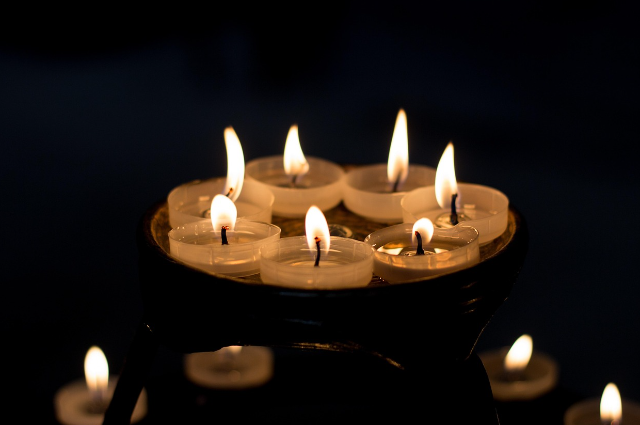
Every year, Diwali feels different now. I don’t know if it’s me growing up or if the festival itself is slowly changing. Like, when I was younger, Diwali meant full chaos, cousins running around, the smell of ghee and sweets everywhere, parents yelling at us not to break the diyas, streets noisy with crackers. You felt the festival in your skin, in your clothes, in your hair, even. Now, it feels quieter. Cleaner. Peaceful maybe. But also a little lonely.
I remember the excitement would start a week before. Shopping for clothes, cleaning the house, helping mom pick sweets, and making rangoli that would get ruined by me five seconds later. And the fireworks! Oh my god, the fireworks. We’d wait all year to blow those crackers. The whole neighbourhood knew who was having Diwali because the loudest house meant the happiest house. And now? Now, half the people post Diwali wishes on Instagram stories and go back to scrolling reels.
From Crackers to Consciousness
I’ll admit, I miss the chaos sometimes. But at the same time, I get why people stopped bursting crackers. Pollution is insane. Delhi’s air literally becomes unbreathable after Diwali. AQI hits over 400. That’s like “don’t even step outside” level. And it’s not just Delhi, cities like Hyderabad, Bengaluru, Mumbai, they all have campaigns now: “Say no to crackers,” “Green Diwali,” all that.
I remember last year, my cousin told me she didn’t like crackers because they scare dogs. And honestly…that hit me. I never even thought about that when I was her age. So maybe this is not losing something, maybe it’s gaining awareness. People light diyas, have small gatherings, or do eco-friendly celebrations. But then there’s my uncle yelling, “It’s not Diwali without crackers!” and I get that too. For him, that’s childhood. For us, maybe this is something new.
The Social Media Diwali
And then there’s Instagram. Half of Diwali is now online. Reels, OOTDs, aesthetic lights, hashtags, and yeah, I do it too sometimes “wait lemme click before we light the diya” and by the time I actually light it, I’m exhausted.
Last year, a friend of mine was crying in the kitchen because her lehenga didn’t look “perfect” in pictures, even though she was having fun with her family. And I thought, damn, when did Diwali become about validation? But it’s also spreading awareness, campaigns about eco-friendly Diwali, donations, and volunteering. I saw this one campaign called “Light Up Someone’s Diwali”, where people bought gifts for kids in orphanages instead of just decorating their own houses. That was actually heartwarming.
Sweets, Hampers, and the Changing Taste
Oh god, the sweets. Remember those homemade laddus, gulab jamuns, mixtures that you’d sneak even though you weren’t supposed to? Now? Everything’s fancy, boxed, designer, “healthy,” gluten-free, protein laddus, what even?
Last year, my neighbour sent us a hamper with handmade candles and dried fruits. Pretty, yes. But it didn’t taste like Diwali. Nothing smelled like home. I missed the burnt laddus, the uneven rangoli, the messy diyas; that imperfection made Diwali feel human. Now it’s polished, clean, Instagram-ready. I don’t know if that’s progress or if it’s just…losing the little warmth.
Families Spread Out
And families. God, families are everywhere now. Diwali isn’t just about everyone being together in one house anymore. People are in different cities, different countries. We do video calls, send emojis, and post stories. That’s considered “enough.”
My best friend’s family did a “Zoom Diwali” last year. Her brother was in Dubai, her parents were in their hometown, and she was in Hyderabad. They all dressed up, lit diyas on camera, and ate sweets while pointing the camera at each other. It was sweet…but also sad. Realising that “togetherness” is slowly changing like that hits hard.
UNICEF reported that 68% of young adults in urban India feel emotionally distant from family, even if they talk online every day. And I feel that. We talk more than ever but feel less connected. Maybe that’s why Diwali feels quieter now; it’s not just fewer crackers, it’s fewer hearts around you in the way you remember.
Western Influence and Fusion
Some people say Diwali is becoming “too modern”, with fairy lights, cupcakes instead of laddus, and Pinterest-inspired decor. But I think that’s just life evolving. Gen Z likes experimenting. We’re not less Indian; we’re just expressing it differently. I saw this influencer talk about “slow Diwali”, reusing decor, wearing sustainable clothes, and gifting handmade stuff. Honestly, it’s beautiful. Instead of showing off, we’re showing care. That feels like the real essence of Diwali to me.
Eco-Friendly But Emotionally Distant
Yes, it’s better for the planet. But sometimes I feel like we’re losing the raw, messy happiness. We buy gifts instead of making them. We post stories instead of hugging. We light diyas but forget to sit down and talk. I don’t want to be all sad here. Because I’ve also seen people doing it right. My neighbour gave handmade diyas to everyone in the street. Another friend spent the day at an NGO distributing sweets. Those little acts of love make me feel like Diwali is still alive, just in a quieter, gentler way.
A Different Kind of Light
Every generation celebrates differently. For our parents, it was the chaos, the streets full of noise, the smell of crackers. For us, it’s smaller, quieter, and mindful. But it’s still Diwali. Maybe the light isn’t from diyas or fireworks anymore. Maybe it’s from kindness, little gestures, time spent with people we care about. Maybe that’s enough. So, this Diwali, whether you dress up for reels, make sweets, sit quietly with lights, or video call your family, it still counts. The festival is still here. The warmth is still here. It’s just glowing differently.
. . .
References
